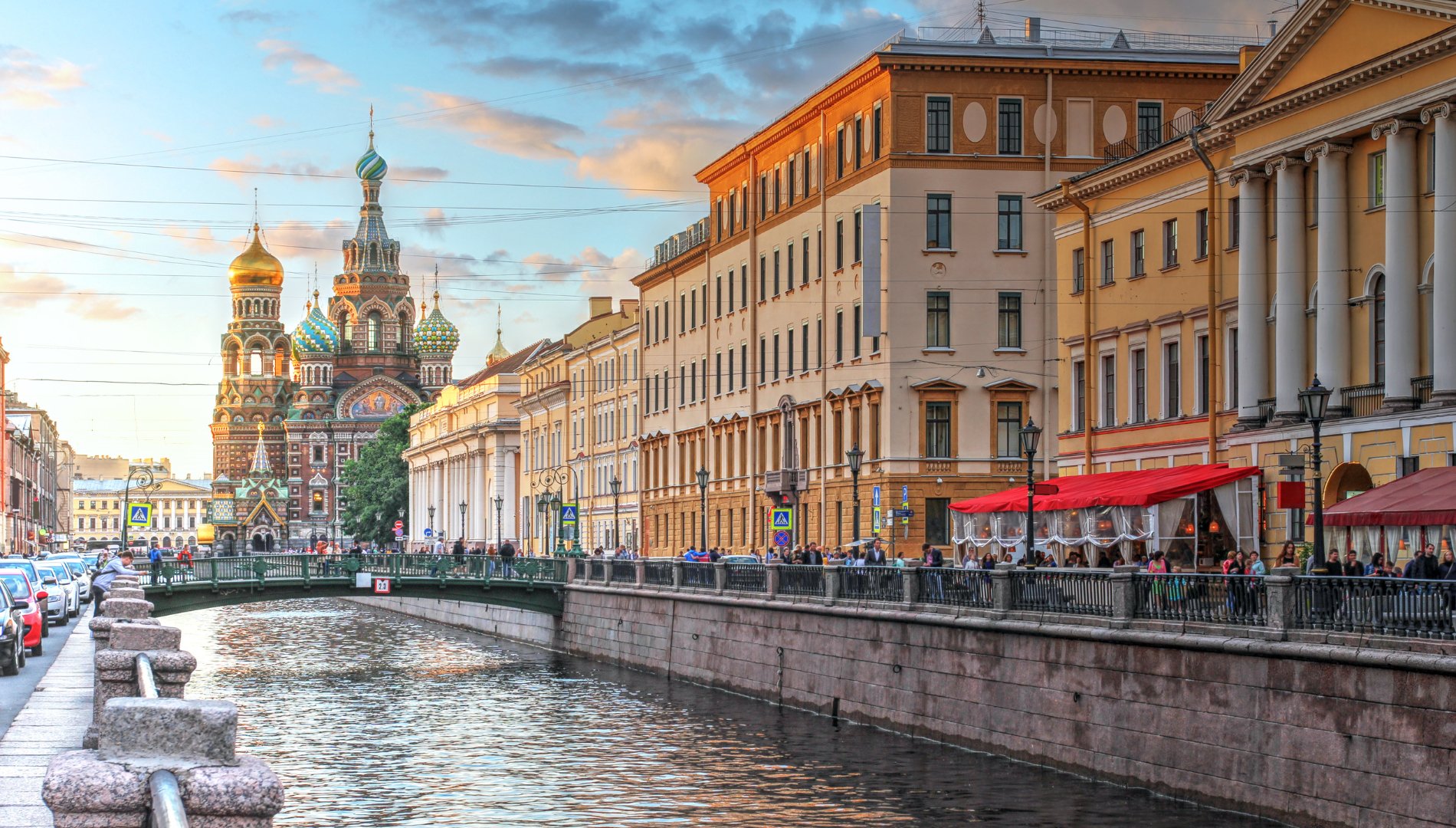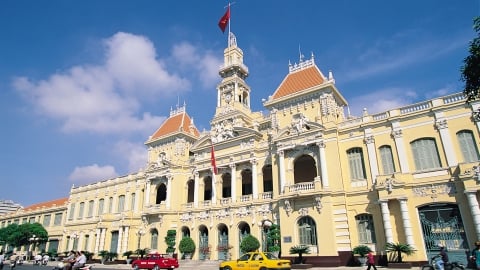RUSSIA'S MOST LUXURIOUS PALACE
Built in the 18th century, the palace served as the official residence of the Russian Tsars and the center of power of the Russian Empire.
The Winter Palace is the most famous building in St. Petersburg, located on an area of 90,000 m2The palace was designed by Italian architect BF Rastrelli at the request of Queen Elizaveta I in the Baroque style, built between 1754 and 1762. For many years after that, it was also the residence of the Russian Tsars.
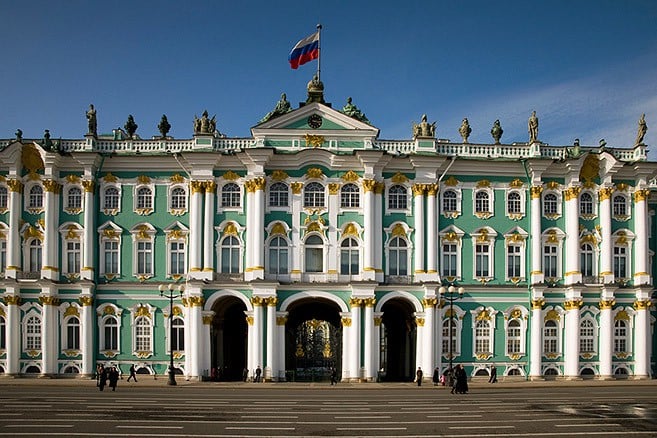
The Russian Winter Palace, where every square meter is a work of art
After the fall of the Tsarist regime, from July to November 1917 the palace became the meeting hall of the provisional government. In 1918, part of the palace and in 1922 the entire building were given to the Hermitage Museum, which displays about 3 million works of art from around the world.
This is the fifth building of the Winter Palace and the largest in scale. Unfortunately, the four previous versions of the palace have not been preserved to this day. The Palace is designed in a closed quadrangle with a large courtyard. The abundance of wonderful decorative details and many statues create an atmosphere of luxury and wealth. The southern facade of the palace entrance has three arches leading to the forecourt, from which you can enter the main gate of the palace. Together with Rastrelli, a number of famous architects such as Jean-Baptiste Vallin de la Mothe and Antonio Rinaldi, Giacomo Quarenghi and Ivan Starov worked on the interior decoration of the palace.
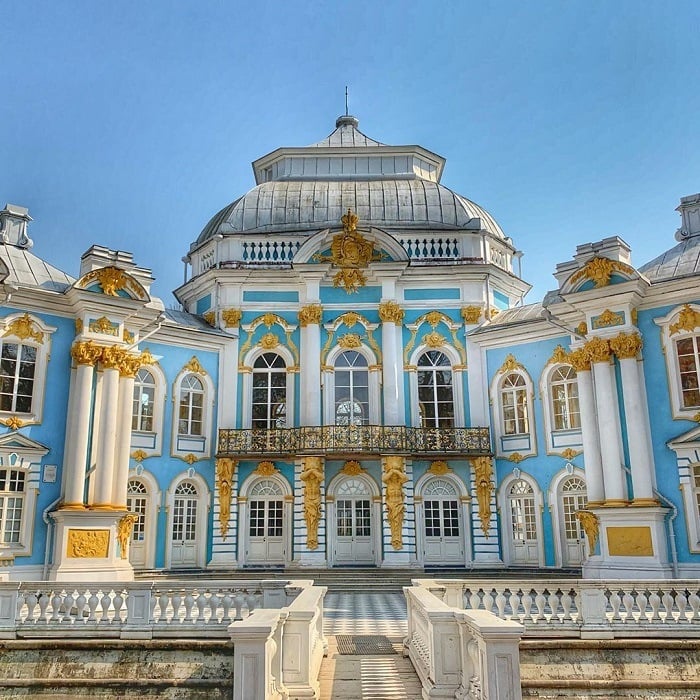
The Winter Palace is one of the most famous buildings in St. Petersburg, Russia.
After the revolution, the Winter Palace, together with other buildings, was recognized as the State Hermitage Museum. The palace's galleries and offices were reorganized to accommodate permanent and temporary exhibitions. During the Great Patriotic War, the Winter Palace was bombed three times, and some rooms were severely damaged. Fortunately, the damaged areas were restored after the war. Today, the Winter Palace, together with the Hermitage Theatre and the Large, Small and New Hermitages, form a world-famous museum complex - the State Hermitage Museum.
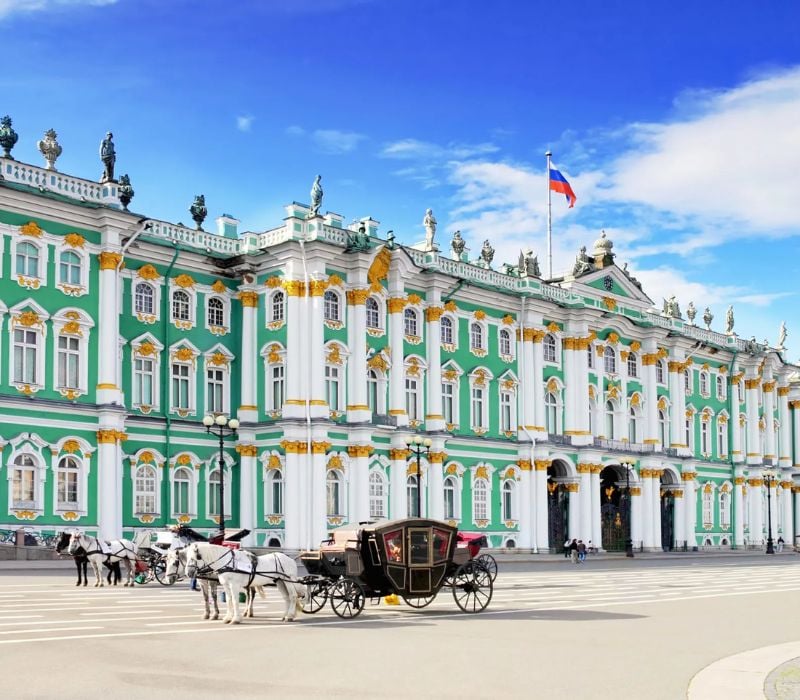
The palace has an impressive green appearance, always creating a sense of royal luxury.
The characteristic feature of the Baroque architectural style at the Winter Palace is the wide domes with oval windows. The oval windows are repeated continuously, creating a strong impression on visitors. As soon as we step inside, we are overwhelmed by the high and splendid ceiling, inlaid with works of art. The palace's smart lighting system also keeps the interior bright, creating a romantic scene like a fairy tale.
Every square meter in the palace is an impressive work of art, with marble floors and an intact appearance despite hundreds of years of history. From the railings, ceilings, walls, windows and main doors, all are meticulously cared for and designed with carvings, sparkling gilding and no space is exactly the same.
DESTINATIONS NOT TO BE MISSED WHEN VISITING THE WINTER PALACE
Gala Stairs
The Gala Staircase is the first special impression for visitors when they first set foot in the Winter Palace, with a special luxury and grandeur. Don't forget to stop and take a photo here before going to visit other artifacts.

The staircase has two rows of gilded brass railings, decorated with statues and reliefs.
The Gala Staircase is a grand, ornate staircase located in the Winter Palace. It was designed and completed in 1689 and was used for formal ceremonies and banquets by the Russian royal family.
The Gala Staircase is 67 m (220 ft) long and 22 m (72 ft) wide and is decorated with marble, brass, and crystal. The staircase has two rows of gilded brass balustrades, decorated with statues and reliefs. The ceiling of the staircase has a large fresco depicting the glory of King Louis XIV.

Stairs are a symbol of luxury and splendor.
Raphael's Loggias Art Corridor
This stunning corridor, created by architect Giacomo Quarenghi, is essentially a replica of the famous Vatican Gallery. Each archway features frescoes depicting biblical stories and reliefs.
The Raphael Loggias consist of 13 open galleries, surrounded by semicircular arches. The walls of the gallery are decorated with frescoes depicting biblical scenes, Greek and Roman mythology, and images of nature and human life.
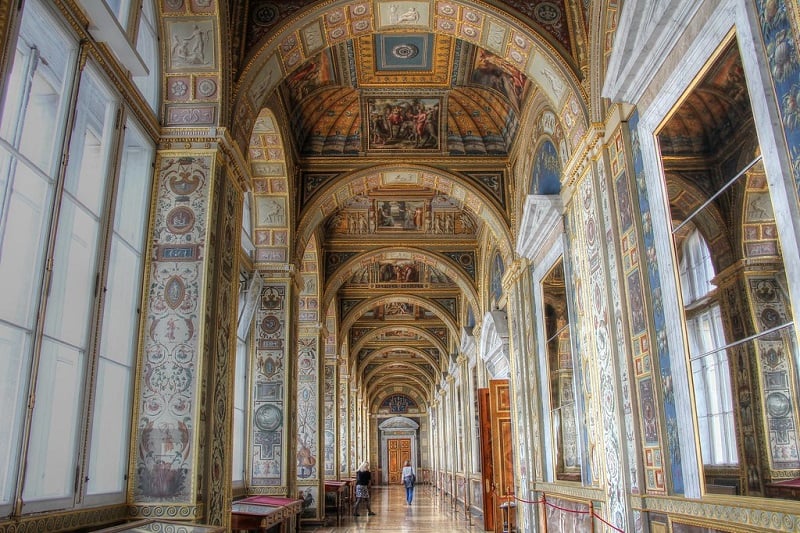
Raphael's Loggias art corridor depicts biblical stories.
This corridor is filled with famous paintings, it would be remiss not to mention the Transfiguration on Mount Tabor. This is one of Raphael’s most famous frescoes, depicting the transfiguration of Jesus Christ before his disciples. The painting is highly regarded for its innovative use of light and color, along with the vivid expressions of the figures.
Or the particularly impressive painting The School of Athens. This work of art depicts a gathering of ancient Greek philosophers, scientists, and artists. It is a celebration of knowledge and learning, and an ode to ancient Greek civilization.
Pavilion Hall
Located in the center of the Winter Palace, the Pavilion Hall is one of the most beautiful and splendid rooms, attracting visitors with its luxurious and sophisticated beauty. This place used to be the space for splendid gala parties, welcoming distinguished guests and is a testament to the splendor of the Russian Tsarist dynasty.
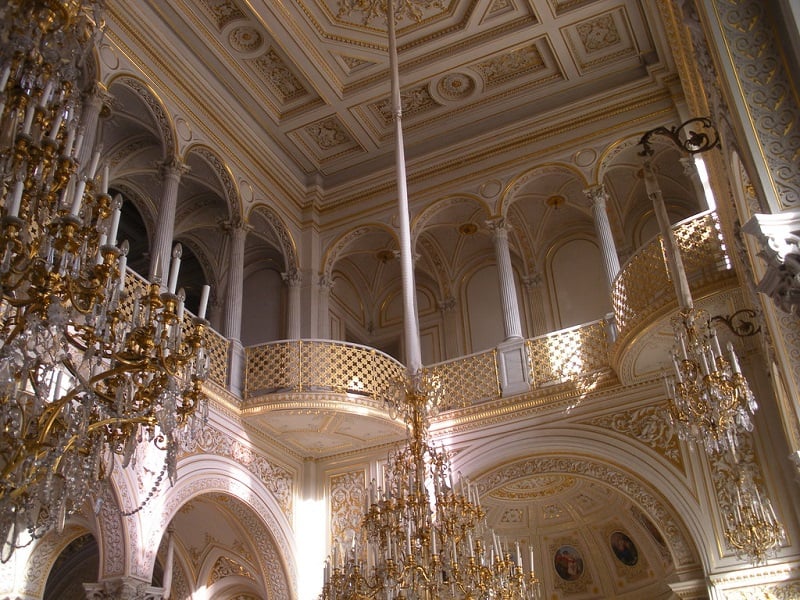
The Pavilion Hall is illuminated by 28 large and small crystal chandeliers.
The Pavilion Hall is designed in the Baroque style typical of the 18th century, with sophisticated patterns, harmoniously combining architectural elements, sculpture and painting. The golden color covers everywhere, from the walls, ceilings to decorative details, creating an extremely splendid and luxurious space.
The Winter Palace not only preserves the splendor of Russia, but is also a famous art space that many tourists want to visit and enjoy.






